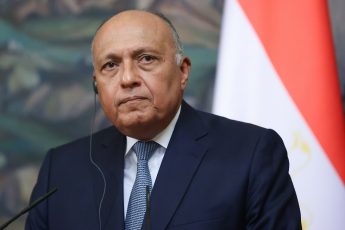In just a few days, world leaders, the UN, regional organizations, indigenous and local communities, civil society representatives, and the scientific community will gather in Egypt to discuss and negotiate resolutions regarding climate-induced risks during COP27. This two-week-long event promises to speed up the implementation of climate actions and follow up on the progress of joint commitments and efforts. But what is COP, what objective does it pursue, and what can be expected from COP27 to be held from the 6th to the 18th November this year?
The story behind COP
In 1992, during the Earth Summit in Rio de Janeiro, Brazil organized by the UN, 179 nations agreed to adopt the United Nations Framework Convention on Climate Change (UNFCCC). The treaty came into force in 1994 with the countries agreeing to meet each year to discuss and negotiate joint commitments and check the progress made on previous pledges. So far, 197 countries have ratified the treaty, agreeing to address issues related to the levels of greenhouse gas in the atmosphere and stabilize this “at a level that would prevent dangerous anthropogenic (human-induced) interference with the climate system.”
Since the treaty came into force, the Conference of the Parties, or COP, the biggest climate-related conference, has taken place each year with the first conference being held in Berlin, Germany, in 1995. During previous COP meetings, the original treaty has been renegotiated and extended with new additions establishing legally binding limits on greenhouse gas emissions. For instance, in 1997, the Kyoto Protocol was adopted and came into force in 2005 calling on industrialized countries to limit their greenhouse gas emission levels by establishing individual, country-specific targets. In 2015, during the COP21, 196 Parties adopted the Paris Agreement, a legally binding international treaty, promising to limit global warming to 1.5°C above pre-industrial temperatures.
Egypt’s COP27
COP27 will take place this year in Sharm el Sheikh amid global crises such as growing inflation rates, the war in Ukraine, and the energy crisis. Around 35,000 delegates applied to attend the event, including over 100 heads of state from all around the world.

Dr. Sameh Shoukry, Minister of Foreign Affairs and President of COP27, in his letter to Parties and observers, said:
“It is important that, after 30 years from the adoption of the UNFCCC, we look at the big picture of where we are, and where we want to be. Such an assessment of the big picture will help us all better formulate our expectations of COP27. We gather this year at a critical time of cascading risks and overlapping crises, multilateralism is facing a challenge due to geopolitical situations, spiraling food and energy prices, and a growing public finance and public debt crisis in many countries already struggling to contend with the devastating impacts of the pandemic, all of which demand urgent attention.”
The objective of COP27 is not straightforward. Rich nations propose a focus on approaches that aim to assist developing countries to switch from fossil fuels to renewable energy. At the same time, developing countries want commitments, such as new funding, to enable them to address climate-induced disasters. For example, emerging nations want funding to relocate vulnerable populations or to recover growth lost due to climate-related disasters such as storms, heat waves, and floods.
Overall, COP27 aims to assess if nations and communities are in a position to respond to the increasing urgency of the climate crisis. An environmental activist, Alden Meyer, who managed to attend 25 of the past 26 COPs, said dialogues must progress from bargaining over the verbiage in legal treaties to assisting nations to meet their commitments. Egypt’s COP27 presidency, at the same time, is calling for a move from negotiations to actions, putting in place complete, timely, inclusive, and at-scale measures and plans, bringing back to life pledges and commitments that had previously been made.

